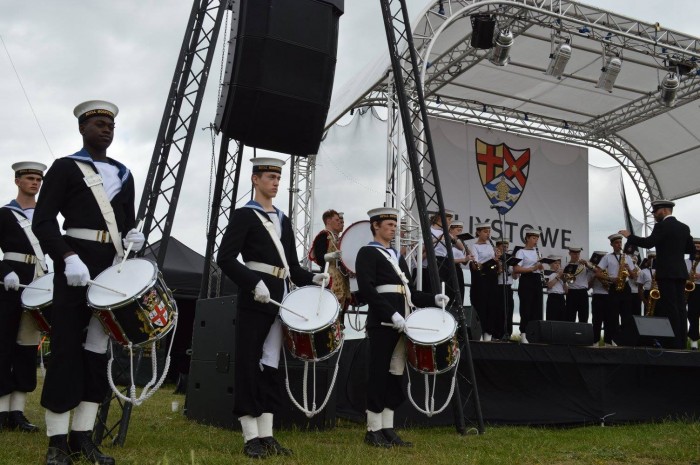
On the weekend of June 24th and 25th, the Pellpax Bullet took part in the Suffolk Armed Forces Week celebrations in Felixstowe, where the Royal Marines were celebrating one of their earliest victories.
As proud sponsors of the Royal Marines Association (RMA), an organisation that offers support and friendship to the entire Royal Marines Family, we were keen to find out more about the marines, their history, and the special network of support that is spread worldwide.
The Admiral’s Regiment
On October 28th 1664, The Duke of York and Albany’s Maritime Regiment of Foot was formed, under the leadership of the Duke of York and Albany (the future James II of England), who had been appointed Lord High Admiral at the age of three – a nominal, rather than operational, position. Almost from the beginning, the abbreviation, “The Admiral’s Regiment” was frequently used.
Towards the end of the second Anglo-Dutch Wars (March 1665 to July 1667), Landguard Fort, near Felixstowe, was successfully defended by the marines, under the leadership of Captain Nathaniel Darell, in a battle against Holland’s Regiment de Marine, a new corps formed in December 1665. This first land battle honour for The Admiral’s Regiment – which, in 1775, became His Majesty’s Marine Forces, and later, the Royal Marines – is recorded as one of the last opposed attacks on England.
As a defeat would have left the country poorly placed in the peace negotiations that followed, Captain Darell is considered a hero, and is honoured annually on ‘Darell’s Day’ at Felixstowe.
The Battle of Landguard Anniversary
This year marks the 350th anniversary of the Battle of Landguard and the first major land victory of the marines. So, this year, the Suffolk regional Armed Forces Week celebrations were centred around that historic event, resulting in a spectacular weekend.
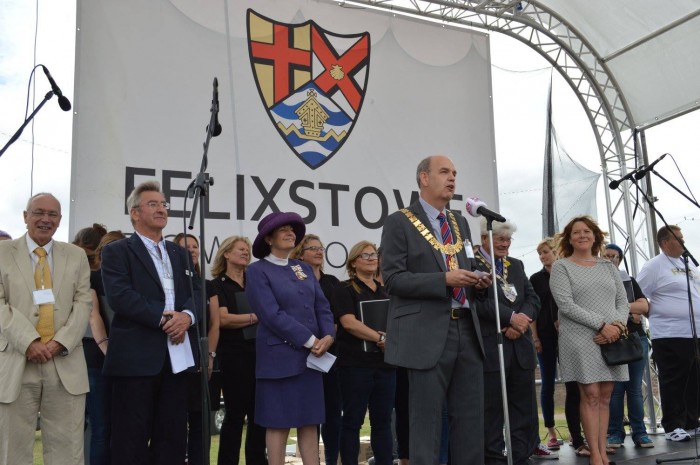
Taking part in the celebrations were members of the Royal Marines Association, founded immediately after WWII to help marines who had been injured, or who were suffering from what is today recognised as post-traumatic stress disorder (PTSD).
Lieutenant Colonel Mark Rundle, who served in the Royal Marines for 33 years, is President of the East Anglia Region of the RMA. He explained what this voluntary organisation is all about.
“The RMA is run by members, for members, offering practical and emotional support to cadets, servicemen, reservists and veterans – and also to their families. Because of recruiting nationally, and from Commonwealth countries, former marines are scattered all over the UK and, indeed, the world. The RMA helps to keep us all within the fold of the Royal Marines family.”
The Work of the RMA
Mark has been active in the RMA for many years. He talked to me about some of the ways in which members of the Royal Marines family are given assistance.
“Some veterans are men who have lived productive civilian lives since retiring from military service. But then, when they grow old, and their wives are ageing too, they might need a bit of help with shopping and housework; maybe they’re widowed, and are just in need of company; and there are those, of course, who need full-time care. Having been self-reliant all their lives, these are, of course, also the very last people ever to dream of asking for any help.
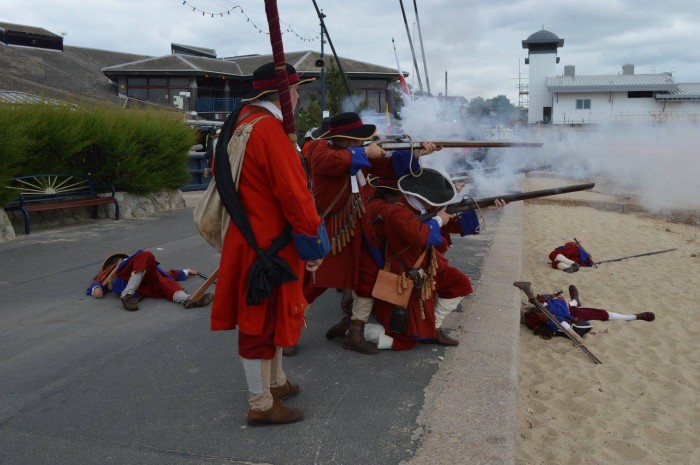
“Not all veterans are old. Some are young men who have been physically damaged in recent conflicts. The NHS is brilliant at saving lives and putting our wounded servicemen on the road to rehabilitation. But the prosthetic legs provided by our stretched health service are basic; they’re just made for walking. Our young amputees want to run; they want to row boats and ride bikes, climb up mountains, and ski down them.”
Mark explained that to provide the men with this quality of prosthesis, we must raise funds and look to the USA, where top-of-the-range legs can easily cost $50,000 a pair (and for complex needs can cost much more). This is an area where funding is so vital, where quality of life hangs in the balance. Mark told me about Captain Jon White, who lost three limbs – two legs above the knee, and his right arm – in an explosion in Afghanistan.
“Royal Marines charities made a grant of £97,500 to enable him to travel to the USA for the fitting of, and training with, the specialised limbs required. He is just one of many who need our support.”
The RMA also cares for the families of marines. Mark told me about a Norfolk couple whose son was killed in Afghanistan just a few years ago.
“They focused on their grief, not realising that they were surrounded by the Royal Marines family. With the couple’s permission, an acquaintance arranged for RMA volunteers to attend the funeral, and the Association was able to provide some support during following years.”
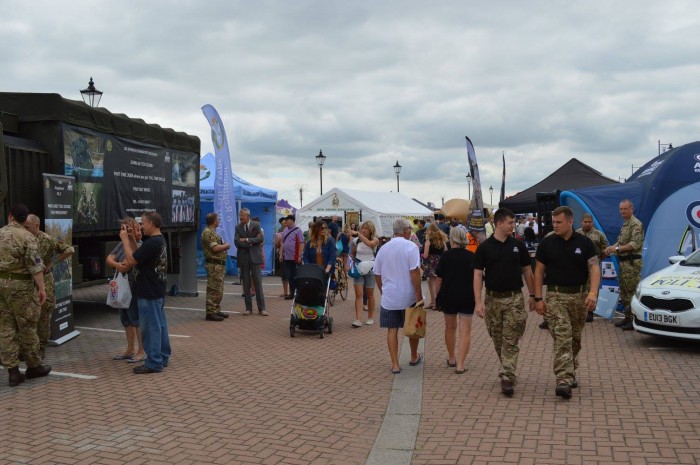
When Mark first joined the Norfolk Branch of the RMA, he was amazed to learn that the members had coordinated their efforts to engage with the public at fund-raising events by using their very own “Zero-Danger-Area” Mobile Air Rifle Range. Having specialised in weapon training as a junior officer, and with years of experience of all manner of firearms, he was sceptical: “I couldn’t see how a portable air-rifle firing range could be made completely safe.”
Zero Danger Area Range
It seems, though, that the RMA Norfolk Branch really is in possession of a bone fide zero-danger-area range. Having to be seen to be believed, the Norfolk Branch RMA’s unique firing range is an inspired contraption, and the brainchild of one of its members, Jaime Graham. An air rifle is fired, completely safely, down a large-diameter pipe; after puncturing the target at the end of the pipe, the pellet passes into a sealed bullet-catcher through a thick carpet fabric, which absorbs much of the pellet’s energy; the pellet strikes a steel plate, set at a 45° down-angle, and is deflected downward into felt.
The whole arrangement completely prevents any possible chance of a backward ricochet. To complete the safety of this unit, which allows for three shooters at any one time, each air rifle muzzle is fixed into the firing end of its pipe, ensuring that pellets can only travel safely down the pipe and into the bullet-catcher.
Members of the public can therefore test their skills with real weapons, in complete safety, and they can do so on two levels: the relatively easy Rifleman competition, where scoring on a large bull is ‘inward’ (meaning that if a pellet touches a dividing line on the target, the competitor is awarded the higher score); and at the advanced, and much harder, outward-scoring Marksman level, on each of five, much smaller, bulls. Coaching by former Royal Marines helps to break the ice, as everybody naturally wishes to shoot just that little bit more accurately. Competition is often fierce, with many people returning time and again to better their scores and thus try to secure “bragging rights” among their friends!
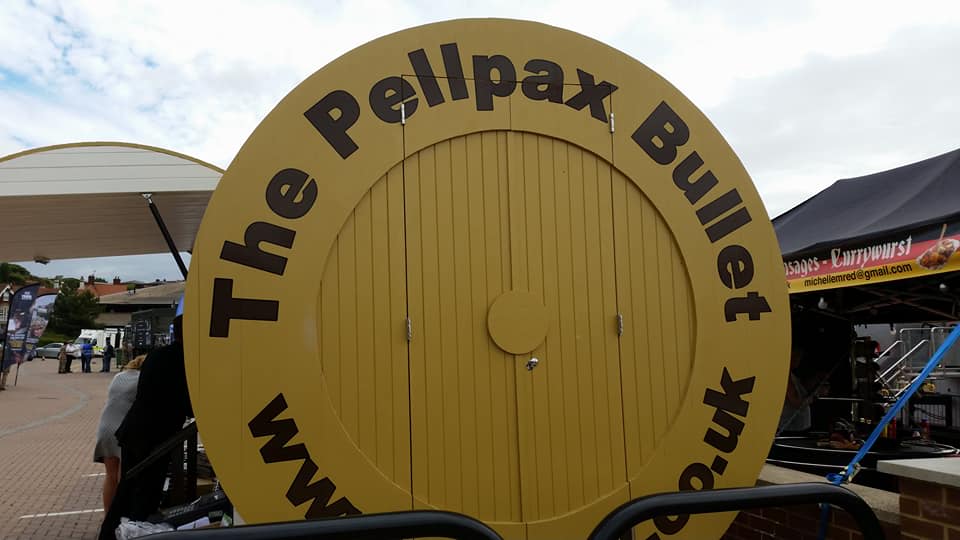
However, despite its appearance at fund-raising events, the portable range was never intended to be purely a money-making tool. People are sometimes reticent about talking to military personnel; they are shy, maybe, of the uniforms and the medals, and wary of an organisation rooted in British history, yet unfamiliar to so many of us.
Mark told me: “The purpose of the range is to help us engage with the public. The target-shooting activity puts people at their ease, and interaction follows naturally, resulting in the general public’s greater understanding of how the organisation can support its members – but more importantly, an understanding of why this support is needed in the first place.”
Norwich 100 Bike Ride
In his four years as a member of the RMA, Martyn Holmes, former Chairman of the Norfolk branch and present Hon. Treasurer, has twice completed the 100-mile route of the popular Norwich 100 Bike Ride, raising over £2,000 for the cause.
“Since I left the Royal Marines in ’92, the war in the Middle East raised its ugly head, and our troops were so deployed. Since then, we’ve seen hundreds of deaths and horrendous injuries from all arms of our forces, as well as families who have been torn apart. If raising a few quid to add to the coffers helps in some small way, then that makes sense to me.”
Cycling 100 miles is a feat beyond the capabilities of most of us, but Martyn made the achievement despite being hampered by damaged hips.
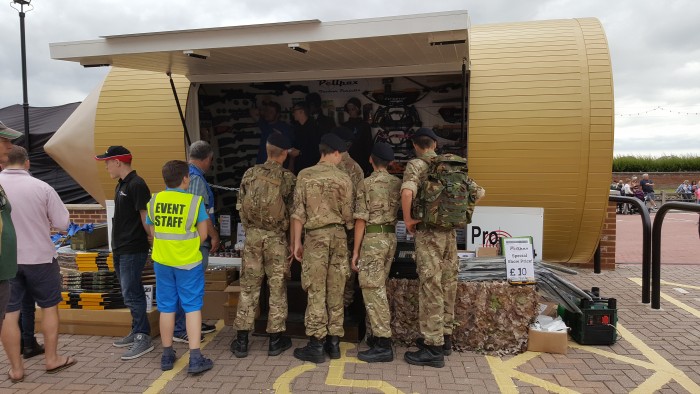
“I developed osteoarthritis in both hips, almost certainly from yomping with 100-plus pounds on my back over the mountains of Arctic Norway, followed by 20 years on firearms ops within Norfolk Police. My active careers took a toll on my hips, and, as a result, I had bi-lateral hip resurfacing. That basically means I have metal hip joints. I did the ride with a good friend, who was there in case my hips seized up – and they nearly did!”
If you’re wondering what yomping is, it’s long distance marching, carrying full kit. This load comprises: a Bergan rucksack, usually weighing well over 100lbs; fighting order, containing basic survival kit, water, and ammunition; a helmet and body armour; a radio; and at least one weapon.
Yomp is the Royal Marines’ very own acronym of ‘your own marching pace’, but as any marine will tell you, it’s actually carried out at the much faster pace that your commander thinks you should be yomping at – which isn’t quite the same thing, really …
Pellpax Sponsorship
Thanks to the dedication of its members, the East Anglia Region RMA has, for the last seven consecutive years, raised more money than any other RMA region in the whole of the UK. And now Pellpax is lending a hand too, in the form of sponsorship. Pellpax has donated four air rifles for the mobile range, as well as regular donations of pellets, competition prizes, and rifle maintenance.
Talking about the Armed Forces Weekend event, Mark said, “The new Pellpax Bullet trailer was stationed next to our firing range. The Pellpax team told people, ‘You can look at these rifles here, but you can have a go with them over there,’ and the RMA volunteers pointed out Pellpax as ‘our very kind new sponsors’. The synergy was wonderful.”
Mark summed up the essence of the RMA. “Our members make the Association what it is, and it’s their activity that is reflected in the way we are organised and run. It’s their efforts which raise the funds to enable these life-changing interventions.” The RMA’s message to its members is, “We’re the constant thread that runs right through your life, providing camaraderie, support, stability, and practical help. Once a marine, always a marine”.
You can learn more about the Royal Marine’s Association at their official website here https://royalmarinesassociation.org.uk You can learn more about the Landguard Fort at the official site here. http://www.landguard.com
